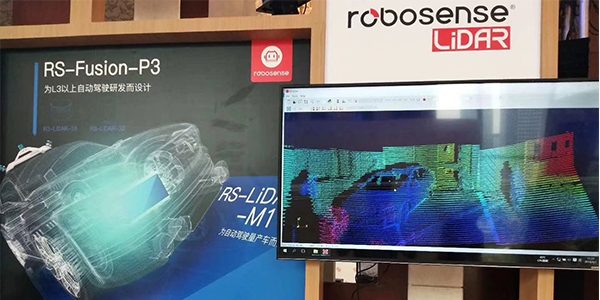RoboSense announced the making of the RS-IPLS Intelligent Perception LiDAR hardware and software algorithm-based solution. According to the company, the software will enable the mass production of safer autonomous vehicles, and features real-time data pre-processing and a “gaze” function similar to human eyes.
The company lists the following as benefits of the new system:
-
MEMS Solid-State LiDAR & AI Algorithms
The RS-IPLS system, based on high-performance MEMS solid-state LiDAR, outputs high-resolution color point cloud data by merging the underlying hardware of 2D imagery with the unique RoboSense RS-LiDAR-Algorithm deep learning sensing algorithm developed specifically for autonomous driving. The intelligent detection algorithm achieves target level information that adjusts the Region of Interest (ROI) detection area in real-time with no delay. In early 2017, RoboSense introduced the laser-aerodynamic environment-aware RS-LiDAR-Algorithms, combined with LiDAR hardware to provide a large number of partners with P-series LiDAR solutions based on different application scenarios.
-
RoboSense “Gaze” Technology
The RS-IPLS features the new RoboSense RS-LiDAR-Gaze “Gaze” Technology. When the system’s field of view perceives a target of interest, it initiates a “gaze” processing mechanism that instantly locks the target for ROI processing, thus achieving clear and stable environmental data. The LiDAR under-the-system architecture maintains a high degree of vigilance of the surrounding environment, constantly capturing the areas of interest, allowing the “gaze” to transfer efficient and high-quality feedback in the field of view.
-
Receiving data in real time
The RoboSense RS-IPLS Intelligent Perception LiDAR system also provides richer three-dimensional spatial data information in real time from the bottom layer, which reduces the time delay normally caused by external fusion. Data pre-processing is performed by the AI algorithm, with the area of interest repeatedly detected for farther detection distance and more accurate perception results for autonomous driving, with reduced data processing stress to the central data processing unit.
The RoboSense RS-IPLS Intelligent Perception LiDAR System is based on the RoboSense solid-state LiDAR technology, the RS-LiDAR-M1pre, which combines the RoboSenseRS-LCDF LiDAR and camera fusion technology, the RS-LCDF technology, RS-LiDAR-Algorithms, and RS-LiDAR-Gaze technology. The combination of these four technologies allows the LiDAR system to go beyond the sensor level, linking the sensor layer and the sensing layer at the system level, so that autonomous vehicles have similar abilities as the human visual system.

